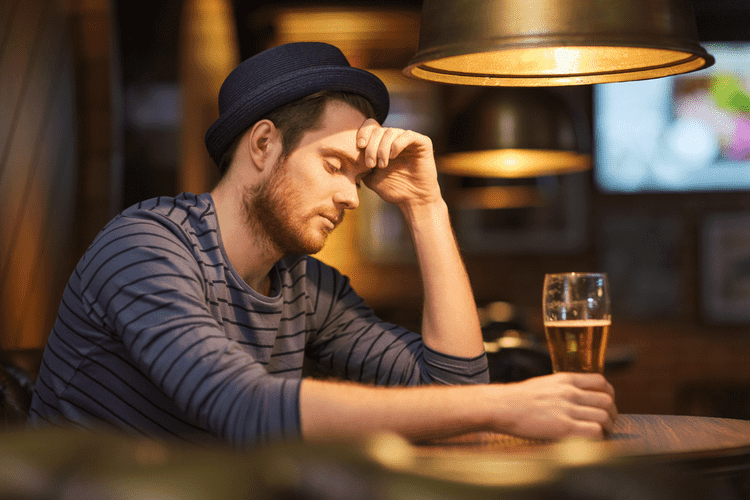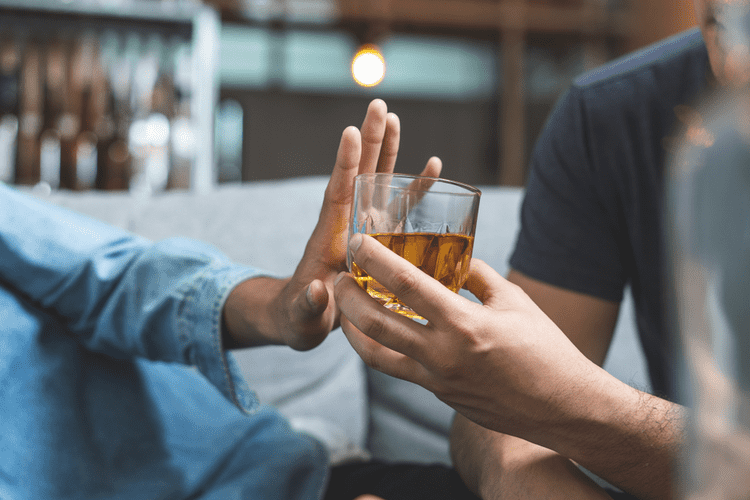If your diabetes is already well under control, a moderate amount of alcohol may be fine either before, during or soon after a meal. Most people with diabetes can drink alcohol, but it’s important to understand how alcohol impacts your blood sugars, as well as other health conditions you http://www.hallart.ru/other/from-russia-with-love may have. Upon his death, histology revealed that the loss of blood to R.B.’s brain damaged a small region of the hippocampus called hippocampal area CA1, which contains neurons known as pyramidal cells because of the triangular shape of their cell bodies (Zola-Morgan et al. 1986).
Types of Diabetes
- All but two kept their hand up, and one who had lowered his hand said he was adopted and did not know about his parents.
- In fact, insulin-resistant people have higher than normal insulin levels (i.e., are hyperinsulinemic1).
- Considerable evidence suggests that chronic alcohol use damages the frontal lobes and leads to impaired performance of tasks that rely on frontal lobe functioning (Kril and Halliday 1999; Moselhy et al. 2001).
Two of the hormones (i.e., insulin and glucagon) are potent regulators of blood sugar levels. Both hormones are produced in areas of the pancreas called the Islets of Langerhans, which, quite literally, are “islands” of hormone-producing cells in a “sea” of digestive enzyme-producing cells. Among other cell types, the Islets of Langerhans include an inner core of insulin-producing beta cells surrounded by a layer of glucagon-producing alpha cells. A total of 26 publications met the criteria to be included in the review(see Table 1 for study details). Fifteenstudies examined prevalence and/or predictors of alcohol-induced blackouts.
Types of Blackouts
White pixels are pixels in which the cell fired at very low rates, and darker colors represent higher firing rates (see key to the right of figure). As is clear from a comparison of activity during baseline and 45 to 60 minutes after alcohol administration, the activity of the cell was essentially shut off by alcohol. Neural activity returned to near normal levels within roughly 7 hours after alcohol administration. The difference between a brownout and a blackout is that brownouts involve partial memory loss.

Supplementary data

We aimed to examine whether young adults who experience a high volume of MBOs are poorer in terms of episodic memory performance compared to non-blackout controls, either when sober or after ingesting alcohol. Specifically, we hypothesised in line with other literature [29, 30] that our MBO participants would be most affected by the presence of alcohol when items would be presented in a context (sentence context, depth of encoding task). Against our hypothesis, we found that control participants showed increased recall when sober, and subsequently a larger http://stavsp.ru/ostalnye_referaty/referat_special_fields_of_psychology.html fall in performance, compared to MBO participants after ingesting alcohol on the depth of encoding task. No significant differences between control and MBO participants were found when sober, or after ingesting alcohol, on free and serial recall tasks. Accordingly, more studies are needed to determine whether the beneficial effects of daily moderate alcohol consumption outweigh the deleterious effects. Diabetics clearly should avoid heavy drinking (i.e., more than 10 to 12 drinks per day), because it can cause ketoacidosis and hypertriglyceridemia.
However, the precise time when a blackout occurred is not possible to determine from participant self-report, nor did we examine the rate of recovery after blackout—our studies focussed on finding if any deficit was present after experiencing a blackout. Towards our goal of understanding memory performance in the aftermath of an MBO event, we conducted a series of standard episodic memory paradigms on participants who reported experiencing at least 9 MBOs in the preceding 12-months (MBO group). We compared their performance with a control group who have never experienced memory loss as a result of binge-drinking. We employed a free recall task as a baseline for memory retrieval performance, and a serial recall task to assess memory for events in their order of occurrence [36]. We also added a depth of encoding manipulation to an immediate and delayed free recall task which compared recall for items embedded within a sentence context (deep encoding condition) vs. orthographic changes in items (shallow encoding condition). We did this to investigate if recall for items embedded in a context is affected more by an alcohol-induced MBO compared to our shallow encoding manipulation.

If you have experienced a blackout before, you’re likely at a higher risk for blacking out in the future and should exercise caution. If you think you’ve experienced a black out, talk to friends that you were with about what happened. If you made an unsafe sexual decision, talk to your doctor https://kochmeister.ru/sozdanie-dachnogo-landshafta-svoimi-rukami-vazhnye/ about being tested for a sexually transmitted disease. You can recover from an alcohol blackout by drinking water and beverages containing electrolytes, such as sports drinks. Eating fruits, vegetables and other nutritious foods can also help your body recover from a long night of drinking.

Effects of Excessive Drinking and Blackouts
- In contrast to chronic alcohol consumption in the fed state—which raises blood sugar levels, resulting in hyperglycemia—alcohol consumption in the fasting state can induce a profound reduction in blood glucose levels (i.e., hypoglycemia).
- Because blackouts tend to occur at high BACs, they commonly stem from binge drinking, defined as a pattern of drinking that increases a person’s BAC to 0.08 percent or higher.
- This is known as insulin resistance and can cause blood sugar levels to become abnormally high (hyperglycemia).
- One study estimated that the odds of experiencing a blackout is about 50% when blood alcohol content reaches 0.22 percent.
- One brain region that is central to hippocampal functioning is a small structure in the fore brain known as the medial septum (Givens et al. 2000).
Stimuli were word lists taken from Roediger and McDermott [38], totalling 270 unique stimuli split into 18 blocks (9 blocks free recall task, 9 blocks serial recall task). Blocks for each individual task were presented pseudo-randomly, counterbalanced across participants. In study blocks, individual words were presented for 1000ms, followed by a blank inter-trial interval of 2000ms.
- White and colleagues (2004) observed that, among 50 undergraduate students with a history of blackouts, only 3 students reported using other drugs during the night of their most recent blackout, and marijuana was the drug in each case.
- Alcohol is known to affect encoding [57] therefore some may consider a greater drop in performance for deeply encoded items, compared to shallow, following alcohol consumption to be surprising.
- Diabetes and alcohol consumption are the two most common underlying causes of peripheral neuropathy.
- Fifteenstudies examined prevalence and/or predictors of alcohol-induced blackouts.
- These findings contradictJellinek’s theory of alcoholism, which posits that alcohol-inducedblackouts are a precursor of alcoholism (Jellinek, 1952).
Hippocampal CA1 pyramidal cells assist the hippocampus in communicating with other areas of the brain. The hippocampus receives information from a wide variety of brain regions, many of them located in the tissue, called the neocortex, that blankets the brain and surrounds other brain structures. As is clear from patient R.B., removing CA1 pyramidal cells from the circuitry prevents the hippocampal memory system from doing its job. The only objective evidence of a blackout is to give someone three unrelated words, have them repeat the words, and then wait five minutes before asking them what the three words were. This is sufficient time for all short-term memory to be lost without transfer to long-term memory.
- While women tend to reach a higher peak BAC faster than men—mostly because they usually weigh less than their male counterparts—binge drinkers are also at risk for blackouts.
- We do know that women are more likely to experience other effects of alcohol, such as liver cirrhosis, heart damage, nerve damage and other diseases caused by alcohol.
- In the free and serial recall tasks we assessed the percentage of accurately recalled words, and frequency of false alarms, with fixed effects of alcohol (before and after alcohol), and group (control and MBO).
- Also, blood sugar levels that stay high over a long period of time can cause liver damage.
- The more genetically susceptible an individual is, the less alcohol is required to black out.
- Only 1 student out of 50 reported that the most recent blackout occurred after drinking beer alone.
Those findings suggest that alcohol consumption, particularly moderate consumption, may have a protective effect against cardiovascular disease. Heavy alcohol consumption (i.e., 200 grams of pure alcohol, or approximately 16 standard drinks, per day) can cause ketoacidosis in both diabetics and nondiabetics (Wrenn et al. 1991). People who consume those high amounts of alcohol typically have been drinking and not eating for days and/or have vomited or developed other illnesses from drinking. As a result, those patients frequently have very low blood sugar levels (although some people with alcoholic ketoacidosis have very high blood sugar levels, because the lack of insulin prevents glucose uptake from the blood into the tissues). The hormone insulin, which is produced in the pancreas, is an important regulator of blood sugar levels. In people with diabetes, the pancreas does not produce sufficient insulin (type 1 diabetes) or the body does not respond appropriately to the insulin (type 2 diabetes).